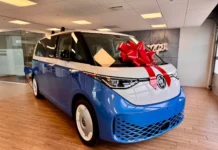Electric cars used to be king of our roads. With advancements in technology and increased demand, EVs may soon rise again.
Throughout automotive history, the popularity of electric vehicles has waxed and waned in the wake of the internal combustion engine. In the early 1900s, EVs outnumbered ICE-powered vehicles by a ratio of nearly two to one. However, as modern roads began to take shape and gas stations dotted the landscape, the shortfalls of electric cars became painfully clear. Internal combustion usurped electricity to become the dominant mode of personal transportation, and EVs have languished since…until now.
Electric vehicles have re-entered the public consciousness, and have gained notable market share in recent years. Environmental woes and oscillating gas prices stemming from the oil crises of the late 20th century kick-started automakers’ attempts at producing cleaner, greener cars for the drivers of tomorrow. Hybrids have offered a logical solution to provide the cleaner emissions of EVs with the range of gas-powered cars. Now, with advancements in technology and falling battery prices, full electric cars seem to be on the verge of a sweeping comeback.
The BMW i3: A launchpad for an electrically-driven future

I recently visited a National Drive Week event in Denver, one of hundreds of sponsored electric car events nationwide. Upon arriving at the event and seeing all the EVs on display, I found myself drawn toward the BMW i3. Nathan Adlen wrote a review of the 2015 BMW i3, and concluded it “might be one of the best examples of forward thinking”.
Until recently, I’ve found myself ambivalent on the subject of electric cars, mainly due to range. Just a few years ago, the cars couldn’t handle more than the typical city commute. The infrastructure to charge EVs quickly and keep them on the move didn’t exist outside major cities. Times have changed, though. And just as computers and smartphones have made quantum leaps in recent years, so too have electric cars. Driving a new i3 with the range extender, I’m inclined to agree with Nathan: this car makes an exceptionally strong case for the future of electronic propulsion.

Getting inside the i3
The i3 is just like a normal car. Okay, a bit odd looking, I’ll grant you that, but get inside and it just feels like a car. It’s electric motor makes 170 horsepower and 184 lb-ft of torque. With this version’s 8.0 second zero to 60 time, it’s no rocket, but the torque makes the i3 feel like a much beefier car. The two-cylinder range extender adds some practicality by alleviating the range anxiety that comes with pure electric cars. The interior feels like most other BMWs, with the exception of the quirky gear selector mounted on the steering column. Other than that, I remarked how it felt just like any other normal car.
That is until I drove it. As with any other electric car, the first things that hit you are the lack of noise and the acceleration. Punch the throttle, and you’ll slingshot in front of any adjacent traffic. Admittedly, I found myself giggling every time I put my foot down pulling away from the lights. The energy-regenerative braking takes some getting used too, and is aggressive to the point where you hardly need to actually brake at all. Let off the accelerator, and you’ll immediately start coming to a halt. The seats are quite comfortable, and while I enjoy a good engine note, the absence of drone on my commuter test drive made for a serene driving experience.
Naturally, being a BMW, the i3 is a bit pricey, even for an electric car, as Nathan pointed out in his review. Starting at $44,450, a new i3 is almost $15,000 more expensive than the new Nissan Leaf. That being said, if your budget can’t stretch to a new one, you can try looking around for used models.
Harbinger of the future: Expanding EV Infrastructure

Like computers and cell phones, the electric car is one of those technologies that has taken awhile to catch on. We can’t imagine living in a world without either cell phones or computers now, though. With its recent advancements, it seems the electric car may join the ranks of those ubiquitous devices. Companies like EVgo want you to think so: their Vice President of OEM Strategy and Business Development was on hand for a ribbon cutting ceremony unveiling their 975th charging station in the U.S. This ceremony was symbolic of a partnership between REI, EVgo, BMW and the local Regional Air Quality Council to raise awareness for electric cars and their benefits.
Initiatives such as this one during National Drive Electric week are symbolic of a systemic change sweeping the nation. Necessity for cleaner vehicles is driving innovation in cars and infrastructure. Offerings such as the i3, BMW’s future electrification strategy, and National Drive Electric Week show a lot of promise for tomorrow’s driving world.
























